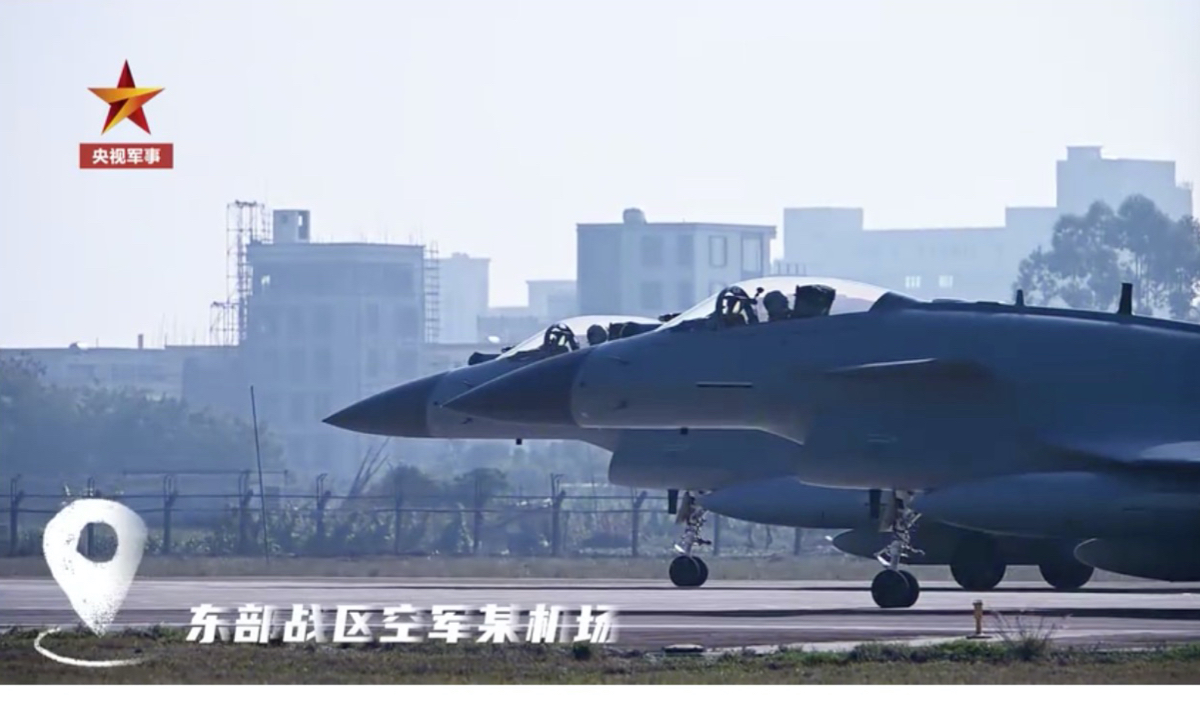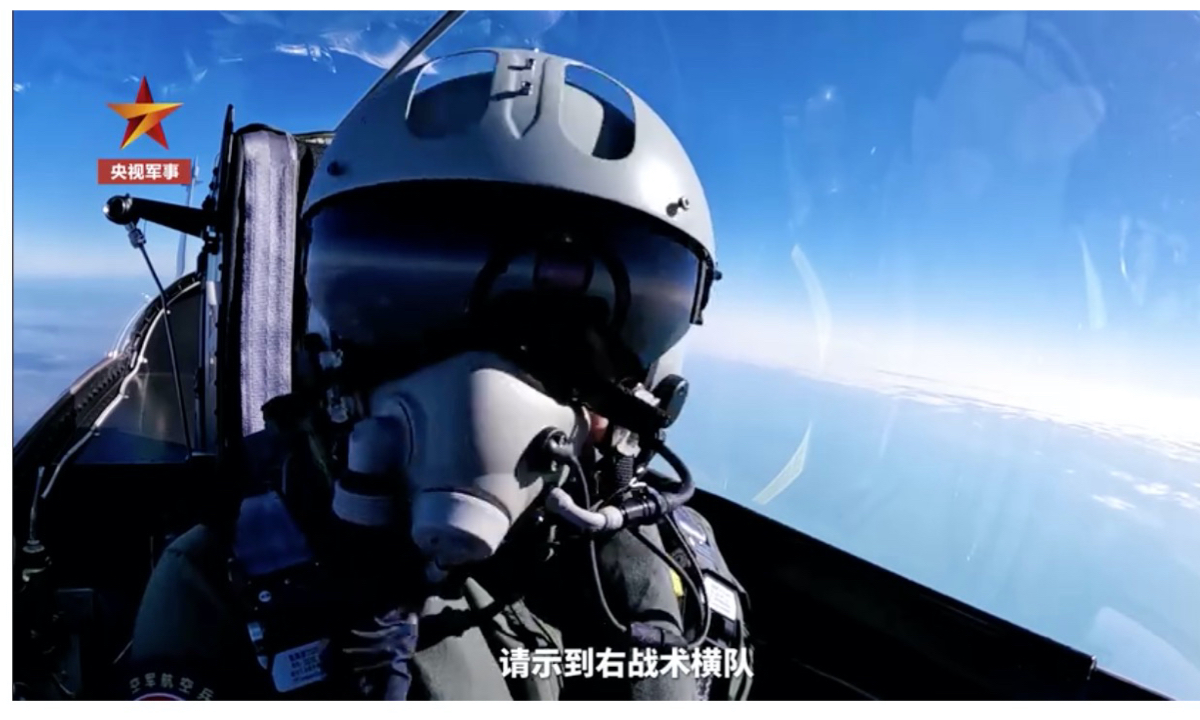
Photo: A screenshot from China Central Television
Two J-10C fighters have conducted interception training in the far sea recently organized by the Eastern Theater Command of the People's Liberation Army (PLA), China Central Television reported.It is reportedly the first time that a Chinese official media outlet revealed details of far-sea interception training by the PLA Eastern Theater Command, which experts said show the PLA's increasing capacity and confidence in high-sea combat.
According to a CCTV report on Tuesday, during the interception training, two J-10C fighters headed for target airspace in battle formation. The wingman sent a warning signal to the lead pilot when it was followed by an enemy plane. When the wingman tried to get rid of the enemy plane, the lead plane operated radar system to intercept the enemy plane and achieved conditions for weapon release to counter the enemy plane.
J-10C is an improved version of J-10 which made its first appearance in 2018. The CCTV report on Tuesday said that the pilots that had attended the recent training had just finished switching to the new aircraft and it was the first time that they had flown the new aircraft during air-to-air combat training in the far sea.
Song Zhongping, a Chinese military expert and TV commentator, told the Global Times on Wednesday that the PLA continues to modify its equipment, indicating that the PLA's technologies are growing mature and innovative. On the other hand, the switch to new aircraft is also needed as the front-line troops put forward more requirements for the equipment for after combat training.
PLA's pilots have a very good mechanism to communicate with military industry manufacturers and institutes over their experience in using the equipment, Song noted.
Interception in the far sea is very difficult. Revealing the details of the PLA Eastern Theater Command's interception exercise in the CCTV report indicates the PLA's increasing capacity and confidence in high-sea combat, Song stressed.
Lacking references and markers, it is easy for pilots to be dazzled and become disoriented in the far sea, not to mention that the situation could be very complex in actual combat. In addition, potential opponents the Eastern Theater Command faces, including the US and Japan, are very capable, Song explained.
Successful interception of the enemy in the far sea means a lot for China in safeguarding its airspace and maritime security. As China has set up an air defense identification zone in the East China Sea, it is a must for the Eastern Theater Command to possess the capacity to safeguard the zone, Song noted.

Photo: A screenshot from China Central Television
J-10C have undergone updates in engine, aerodynamic configuration, avionics flight control system and radar system, after which it has been developed into a world-leading 4.5th generation aircraft.
The latest modification is very likely aimed at optimizing its internal system and improving the weapons it carries, according to Song. "For example, to make its operation system more agile and easy to use, to improve the capacity of its radar system or to develop for it a fire controlling system that suits new types of ammunition," Song said.
As a single-engine medium-sized aircraft, J-10C's low oil carrying capacity is a disadvantage in performing interception missions in the far sea. But low oil carrying capacity dose not equal small combat radius. With flexible tactics, medium-sized aircraft can respond quickly, which is a necessary quality to deal with emergency missions like interception, Song explained.
Low production and maintenance cost of single-engine aircraft is also another huge advantage, experts noted.
Heavy multi-purpose aircraft like J-16 and medium-sized aircraft like J-10C are both sharp weapons of the country to safeguard airspace and maritime security, and they both need to be practice their combat skills and tactics in the far sea, Song stressed.





